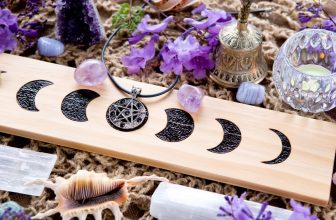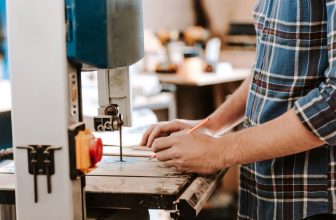Contents
Spinning sharp blades at several thousand RPM, you’d best believe that circular saws are extremely dangerous.
There are many precautions needed to keep yourself safe when using one of these saws (or any powered saw, really), and in this article you’ll find a full guide to circular saw safety with everything you need.
As well as following some essential safety protocols, you always need to “keep your head on your shoulders” when using any power tool.
Pay attention to what you’re doing, for every cut. Always be cautious and careful – and if you ever have doubts about something then just stop the cut, check your concerns, and then proceed when you’re comfortable.
It takes just a little lapse in concentration one time for a circular saw to take your fingers off.
Injuries happen whether you using a mini circular saw, worm drive saw or any other types.
That’s always worth remembering.
Aside from keeping your wits about you, here’s what else we’re going to discuss:
- Safety gear
- Blade considerations
- 3 step process for safely making a cut
Safety gear
The two main pieces of kit you might consider when using a circular saw are safety glasses and earning protection.
Safety glasses are crucially important – your eyes, of course, are a very sensitive and vulnerable part of your body, and it’s always worth taking steps to protect them.
With a powered saw, there’s a lot of material getting thrown around as you cut through it… Even with circular saw dust collection during the cut and proper caution, there’s always a risk that something gets thrown into your eye.
Even a small piece of wood or other material (or even just dust) can do serious damage your eye – Or even worse, you could catch a large piece of material in the eye and end up losing it or going blind.
Always wear safety glasses!
And hearing protection is just as important, in my view.
A lot of people may disagree – after all: “it’s a pain to put all this gear on before every cut, and can a saw really do that much damage?”
The answer is yes, a circular saw can do serious damage to your ears. The same can be said for most power tools.
Your hearing, like your eyesight, is both precious and vulnerable.
Working in noisy environments with no hearing protection can lead to loss or diminishment of hearing, or other lifelong issues like tinnitus (a constant ringing in the ear, caused by noise damage).
When using a circular saw, the risks to these important senses of sight and sound are too significant to be ignored!
Blade considerations
We have a whole article that breaks down the different types of blades for circular saws, and their uses.
Of course, you want to make sure you’re using the right type of blade for the job – you don’t want to try cutting concrete with a fine woodworking blade, for example.
Aside from that, your blade should always be kept sharp. And, you should replace it at some point after it’s had its day.
A dull blade makes a binding in the material more likely – which can cause some sort of kickback. Basically, the dull blade “catches” in the material and throws it around.
This has the potential to end your life or cause serious injury and is clearly a situation you want to avoid.
You also need to know how to change a circular saw blade so you won’t be hurt.
3 steps to a safe cut
1: Positioning
First up, you want to position your piece correctly, and think through your cut from start to finish.
Your material should be set up so that your “main” piece is supported, but so the cut off can fall away freely after the cut is done.
A good example of this is to have your piece resting on two sawhorses, while making your cut to the “outside” of the horses.
This will let you securely hold your piece on the saw horses, and then have the cutoff fall away to the side after the cut.
Without proper support, you can risk some sort of material kickback. Or also your support collapses after a cut which could cause the live saw to fall on something (or someone), or snag/throw something.
An example of this would be if you put a piece on two saw horses, but then cut in between the horses. After the cut, both pieces would fall down in between your horses. Your saw (and you) could easily fall with them and cause all sorts of havoc and damage.
2: Make the cut
Line up your saw along the cutline, engage the blade by pulling the trigger, and push the saw through your material.
As you’re progressing with the cut, pay attention to how the saw is behaving.
If you notice the blade starting to bind, or you hear the saw motor starting to struggle, that’s a pretty good sign that you should back off.
A bind, as mentioned before, could cause the dreaded kickback.
Push the saw firmly through the piece, but not so fast that it struggles. A comfortable pace that doesn’t overly stress the saw is the best approach to avoid kickback and get a nice clean cut.
If your saw keeps struggling to cut the material – then stop trying. If this happens, either your saw lacks the power to complete the cut, or your blade is incapable of doing so.
In either case, you should stop and address the issue before continuing your cut.
3: Post cut safety
If you have good positioning, then your pieces should fall away easily after you finish the cut.
Keep in mind at this point that you still have a very live and very dangerous saw in your hand – if you don’t have an electric brake, the spinning blade can take a long time to slow down even after you’ve released the power.
It’s still just as dangerous during this period as when it’s in use.
The blade guard should slide back into place as you’ve finished the cut – so that’s the first thing to make sure of, as it’s the main physical barrier between that dangerous blade and anything it might come in contact with.
Put the saw down in a safe position until the blade has stopped spinning.
The last point in this guide is that before, during, and after your cut you should always be aware of your power cord.
There are two ways it can be a safety issue: firstly, you could cut through it with the saw. This happens a lot, and it leaves live wires exposed – not what you want.
The second is that during a cut you run out of length in the cord unexpectedly, and it snags or pulls your saw. This could cause your saw to fall, or snag, or bind, or all sorts of undesirable outcomes that are exceedingly dangerous.
So always be mindful of the cord!
Conclusion
Safety, safety, safety!
You don’t want to lose fingers, damage your hearing, or in any way injure yourself or someone else when using a circular saw.
The consequences for lack of safety protocol can be dire – a ruined life, or even death.
Circular saw safety is by far the most important thing to keep in mind when using any power tool. People are injured or killed by tools every day – don’t become a statistic.
Now when you know all about safety and you want to buy saw you can check our recommendations best circular saw.






